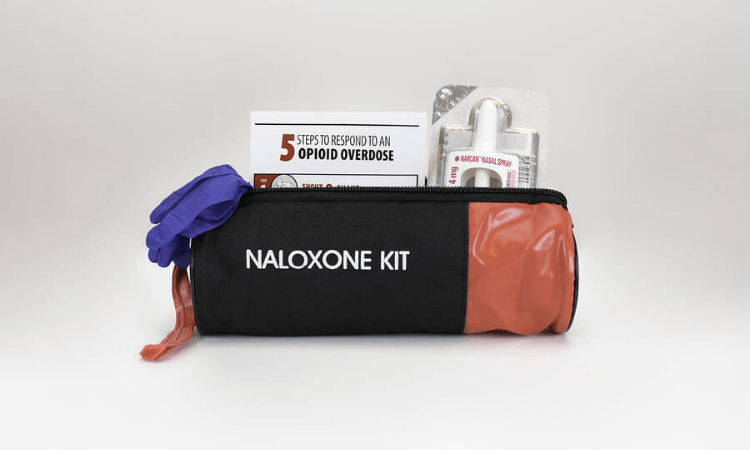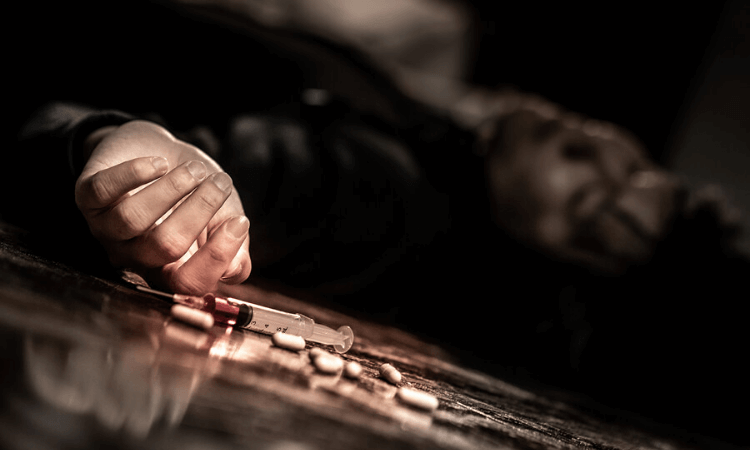
Narcan (naloxone) is a nasal spray that serves as an opioid antagonist and an anti-overdose solution. In the event of an overdose on opioids such as heroin or fentanyl, prompt administration of naloxone cancels the effects of the overdose by replacing opioids active on the receptors in the brain and prevents more opioids from binding.
Naloxone isn’t new, by any means, and has been used in emergency departments and by first responders for years. The recent increase in opioid overdoses and deaths has led to increased availability. It is available without a prescription and is routinely carried by law enforcement, EMTs, and even civilians.
What Is Narcan (Naloxone) Used For?
Medical providers can administer Naloxone intravenously in the arm or thigh but it is more commonly given in the form of a nasal spray that anyone can administer. In the event of a suspected or confirmed overdose, it can save a person’s life.
| Important: Naloxone is not a substitute for medical help. It is vital to call 911 immediately. |
What Should I Do if I Suspect an Overdose?
Firstly, if you suspect someone is experiencing an opioid overdose, check to see if they are responsive by gently shaking the person or shouting at them. Then check their breathing status.
If the person isn’t responding or appears to have difficulty breathing, administer one dose in a nostril and call 911 immediately. The 911 dispatcher may give you instructions to perform CPR or remain close by the person until help arrives.
Naloxone Dosage
When a person is unconscious, the person who is having the overdose cannot administer the naloxone. As such, a family member, friend, or bystander must deliver the remedy. For this reason, the loved ones of people who abuse opioids must have Narcan readily available in case of an emergency. In the U.S., it is now available at most major pharmacy chains without a prescription for under $20.
The Narcan medication guide includes the following information about dosing:
Administer one spray in one nostril. Each Narcan dose contains 2-4 mg of naloxone hydrochloride, which is usually, but not always, sufficient to revive someone one time. One spray in one nostril is the recommended initial dosage. Each Narcan nasal spray contains only one dose. It cannot be reused and must be discarded.
Administer naloxone as soon as possible and call 911 immediately. The longer a person experiences CNS depression, the more likely they are to incur severe damage to their nervous system.
Re-administration may be necessary. If there is no response or change after the initial, a new nasal spray dose should be given every 2-3 minutes. Note that this can happen if the person has taken a particular potent opioid such as fentanyl or carfentanil.
If the person responds momentarily but then falls unconscious again, naloxone should be readministered. If multiple doses are delivered, Narcan should be administered in an alternating nostril each time it’s used.
What to Know About Using Naloxone

Signs someone is experiencing an opioid overdose and needs to be revived with naloxone include:
- Unconsciousness
- Unresponsiveness
- Slow, shallow, or labored breathing
- Respiratory arrest
- Bluish skins and finger nails
- Pinpoint pupils
Naloxone administration causes instantaneous and severe opioid withdrawal symptoms. For this reason, among others, it is crucial to seek medical assistance immediately. Some people may not be able to be given Narcan if they have allergies to ingredients that include benzalkonium chloride, sodium chloride, or hydrochloric acid.
Critically, naloxone can only block the effects of an overdose that involves opioid or opiate drugs, such as morphine, heroin, fentanyl, or oxycodone. The drug will not revive a person who has overdosed on meth, cocaine, Xanax, or other non-opioid substances.
Because naloxone instantly reverses the effects of opioids, including euphoria, the drug cannot be used to get high. For this reason, Narcan addiction is pretty much impossible.
Treatment for Opioid Addiction
Persons who’ve had a life-saving overdose of Narcan should consider undergoing comprehensive, long-term addiction treatment. Following detox, a treatment plan should consist of evidence-based approaches, such as behavioral therapy, individual and group counseling, group support, and aftercare planning.
At Recovery in Tune, we employ caring, professional staff who specialize in addiction. We provide our clients with the knowledge and skills they need to achieve sobriety and regain the life they deserve.
If you or someone you love is battling an opioid addiction, please contact us as soon as possible—we can help!